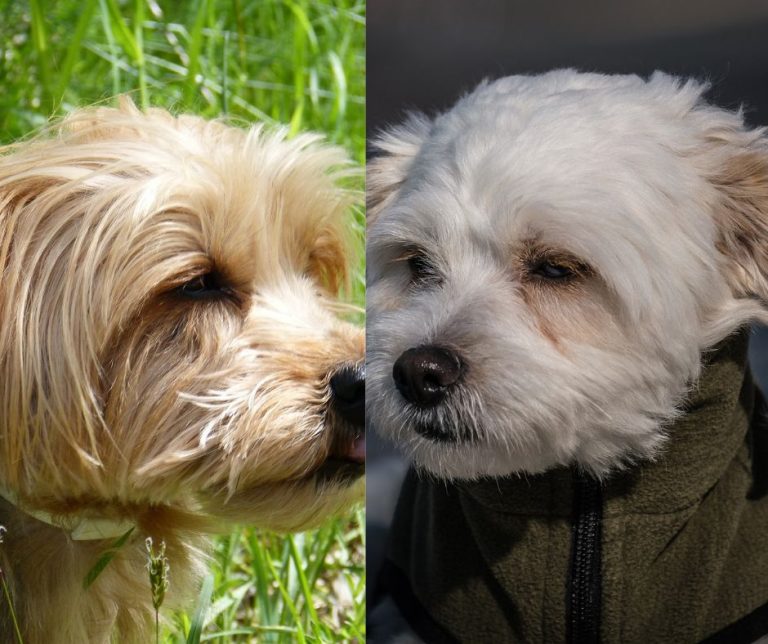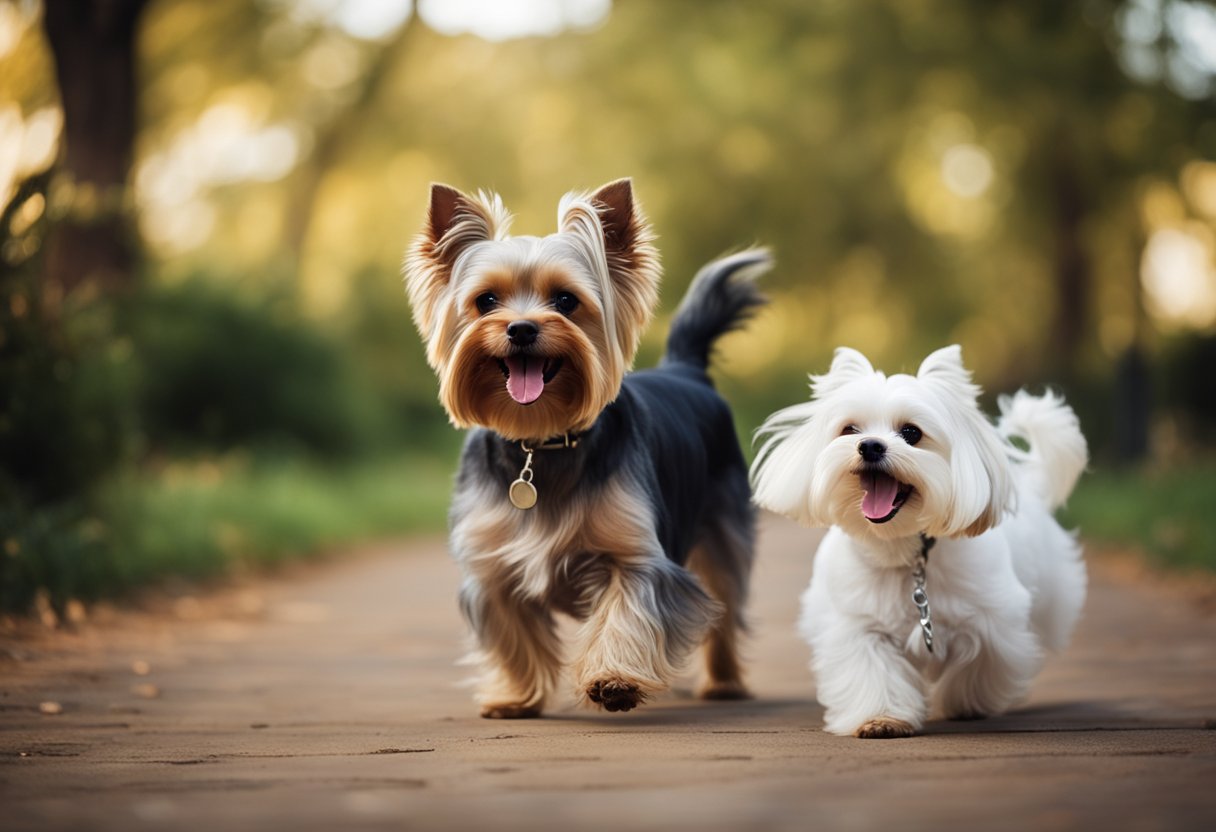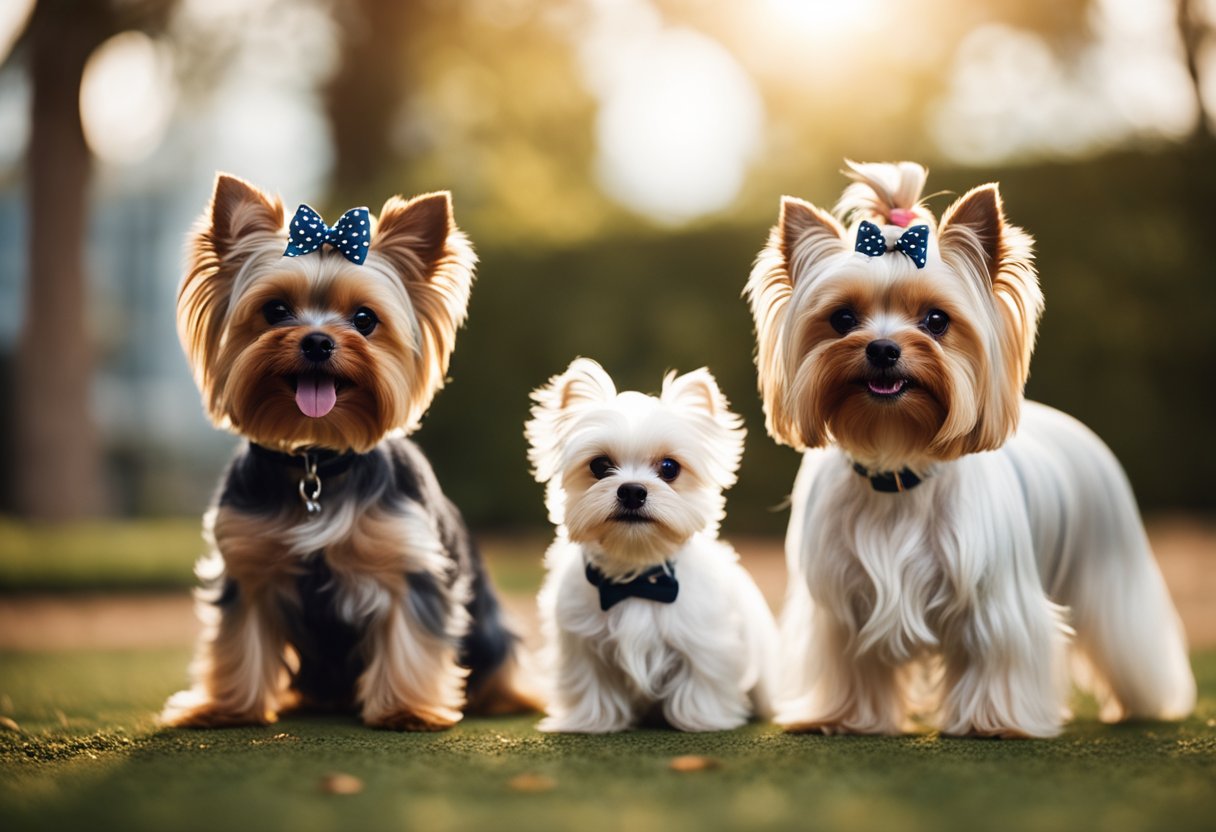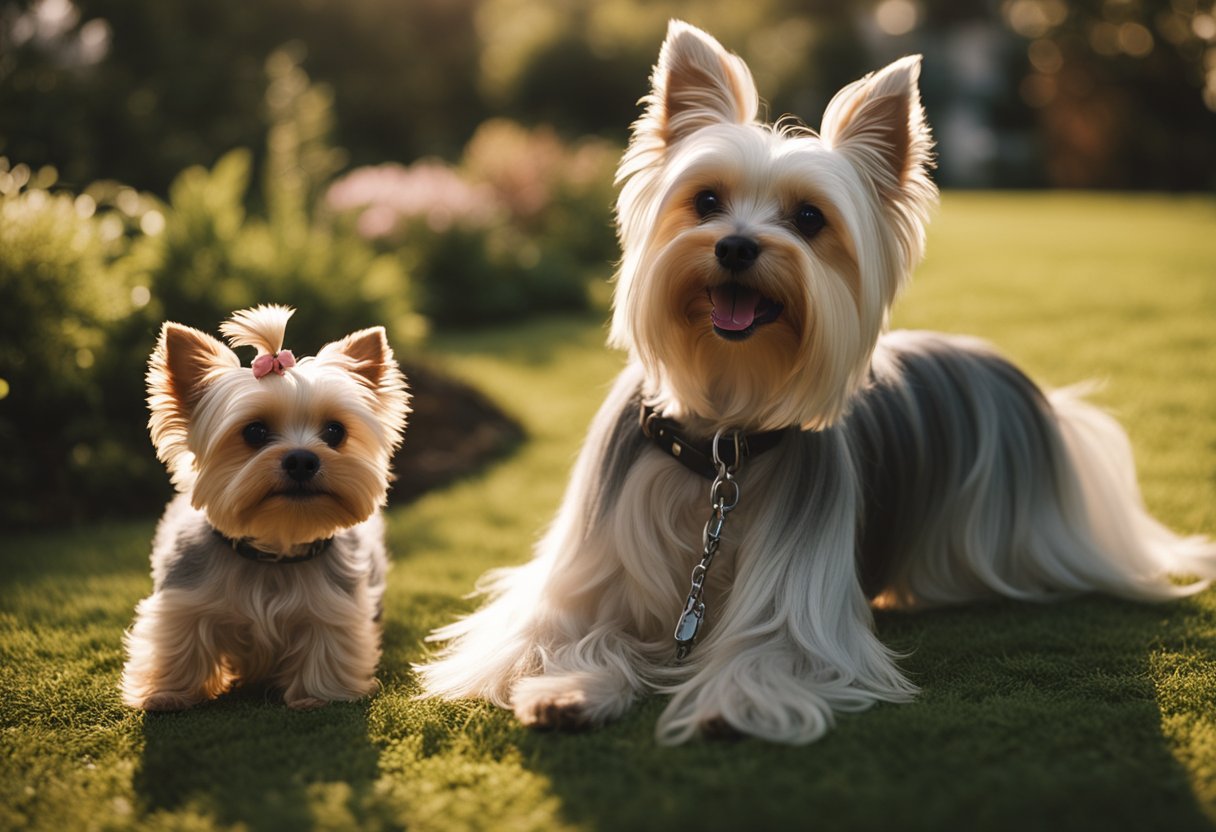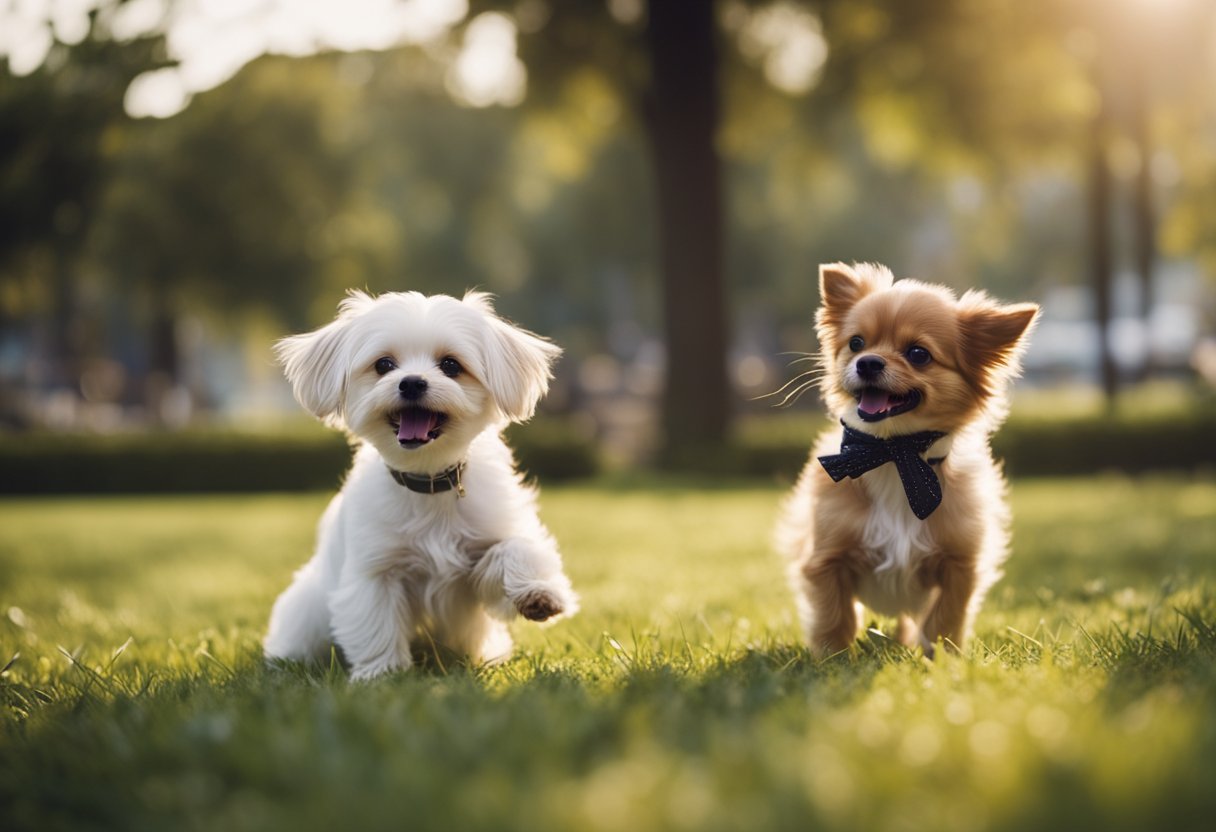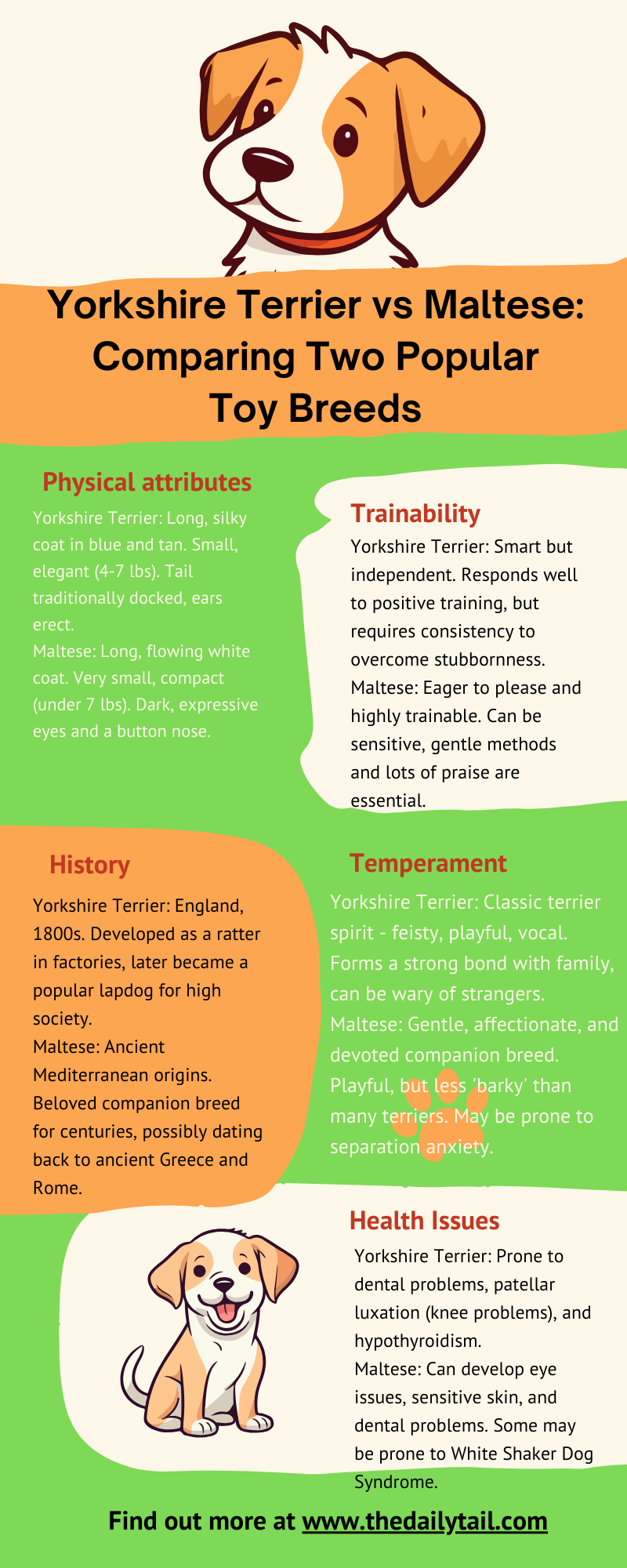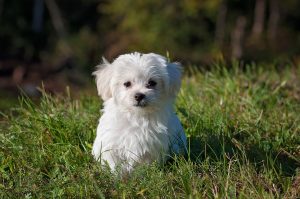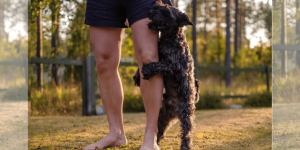After years with various breeds, I still find the Yorkshire Terrier vs. Maltese choice a fascinating one. Here’s what dog ownership experience has taught me.
When it comes to choosing a small dog breed that fits into family life and thrives in various living conditions, the Yorkshire Terrier and Maltese are two breeds that are often compared. Both breeds are small in size and have a history of being companion animals, which makes them popular choices for individuals and families alike. The Yorkshire Terrier, often known as the Yorkie, boasts a personality that is larger than its small frame might suggest, with a confident and affectionate nature, as well as a distinctive coat that comes in a variety of colors.
The Maltese, with its signature long, flowing white coat, presents a slightly different appeal. Renowned for its gentle and friendly demeanor, the Maltese is known to be particularly well-suited for families with children and is adaptable to various living situations. Despite their similar stature, the breeds exhibit differences in their temperament, care requirements, and even lifespan, which are crucial considerations for prospective dog owners looking to make an informed choice between the two.
Both the Yorkshire Terrier and Maltese have loyal followings and have earned their places in the hearts of dog lovers around the world. They each carry distinct traits and needs that can influence an owner’s decision. Understanding these differences in breed characteristics is important for potential owners to ensure that their chosen companion will integrate well into their lifestyle and provide mutual joy for years to come.
Breed Origins and History
The Yorkshire Terrier and Maltese both have deep historical roots, with each breed enjoying a rich and distinct heritage. They emerge from different cultural backgrounds, the former hailing from England and the latter from the Mediterranean.
Yorkshire Terrier History
The Yorkshire Terrier, affectionately known as the Yorkie, has its origins in England during the 19th century. Initially bred for the purpose of catching rats in mines, the Yorkie also found a place in weaving mills for similar reasons. The breed was developed by working men in Yorkshire, hence the name, who sought a dog with determination and tenacity, typical traits of terriers. The specific breeds that contributed to the Yorkie’s lineage are thought to include the Clydesdale Terrier and the now-extinct Paisley Terrier, among others.
Maltese History
The Maltese breed boasts an ancient lineage, with roots tracing back to early civilizations around the Mediterranean, particularly in the area of modern-day Italy. This breed’s history spans at least 29 centuries, with its ancestors potentially being spitz-type dogs from regions like Sweden or the Tibetan Terrier from Asia. Throughout history, the Maltese has been a symbol of luxury and has graced the laps of aristocracy across the world. Their nobility status is reinforced by their presence in Renaissance paintings and writings from as far back as the time of the Ancient Greeks.
Physical Characteristics
Comparing the Yorkshire Terrier vs Maltese in physical characteristics reveals distinct differences in size, coat, and breed standards. These two toy dogs, commonly known as Yorkie and Maltese, respectively, each have a unique appearance that potential owners should consider.Size Comparison
Yorkshire Terrier:
- Weight: 4 to 7 pounds
- Height: 7 to 8 inches at the shoulder
Maltese:
- Weight: 4 to 6 pounds
- Height: 7 to 9 inches at the shoulder
Both breeds are remarkably close in size, falling into the toy dog category, but Yorkshire Terriers may stand slightly taller and can have a broader weight range. We also have to note there are teacup variations of both canines. We have met the Teacup Maltese and Teacup Yorkshire Terrier.
Coat and Appearance
Yorkshire Terrier:
- Coat: Long, silky, and straight; often parted down the middle of the back
- Color: Black and tan transitioning to a blue and gold
- Shedding: Minimal; considered hypoallergenic
Maltese:
- Coat: Long, flowing, white coats that can touch the ground
- Color: Pure white, although some may have light tan or lemon markings
- Shedding: Low; also deemed hypoallergenic
Both the Yorkie and Maltese have coats that require regular grooming. The Yorkshire Terrier’s coat coloring is unique in its changes from puppy to adult, while the Maltese carries a trademark white elegance.
Recognized Standards
Recognized by major kennel clubs, both breeds have specific standards that dictate their ideal physical appearance.
Yorkshire Terrier: The breed standard focuses on a compact, neat appearance. A Yorkie’s coat is a defining feature, with a fine, glossy, and straight texture being highly desirable.
Maltese: For the Maltese, the standard emphasizes the importance of a graceful and balanced overall appearance with a slightly rounded skull, expressive eyes, and a fluid gait.
Temperament and Personality
When comparing the Yorkshire Terrier and the Maltese, both breeds exhibit unique behavioral traits that are essential to understand for potential pet owners. They show varying levels of energy, trainability, and interaction with families and other pets.Behavioral Traits
Yorkshire Terriers (Yorkies) are known for their bold and confident nature—even though they are small in size. They pack a lot of personality; they are affectionate and intelligent, but can be somewhat stubborn when it comes to training. Regular and consistent training sessions are necessary for them to learn effectively.
On the other hand, Maltese are typically more gentle and loving. Their playful demeanor is coupled with an eagerness to please, which makes them quite trainable. Due to their more docile nature compared to Yorkies, Maltese dogs may have slightly lower energy, but still require regular exercise to maintain their health.
Suitability for Families
Both breeds tend to be very friendly and affectionate with family members. However, the Maltese often has a more gentle temperament, making it a better option for families with young children. It is important for interactions between children and either breed to be supervised to ensure safe play for both the children and the dogs.
Yorkies, while also affectionate, may be better suited for families with older children due to their more sensitive nature and small size, which could potentially make them less tolerant of the inadvertent rough handling by very young children.
Interaction with Other Pets
The interaction between these breeds and other pets can vary. Yorkies are often more territorial and can be assertive with other dogs, reflecting their confident personality. Due to their intelligence, they can learn to coexist with cats and other dogs, especially when they are socialized from a young age.
Maltese are generally amiable with other pets, including cats and other dogs, thanks to their gentle temperament. However, their playfulness requires that they have companions who are similarly gentle to avoid any potential mishaps during playtime. Socialization plays a key role in fostering positive interactions with other pets for both breeds.
Health and Lifespan
When considering the Yorkshire Terrier and Maltese breeds, prospective owners should understand the health challenges and anticipated lifespans of each. This knowledge ensures the well-being of these beloved pets through informed care and preventive measures.
Common Health Issues
Yorkshire Terriers (Yorkies) are generally robust little dogs, but they can be predisposed to certain health issues such as:
- Hypoglycemia: Low blood sugar events that are particularly of concern in puppies
- Portosystemic Liver Shunt: A condition in which blood bypasses the liver, leading to unfiltered blood circulating throughout the body
- Collapsed Trachea: A common condition affecting the airway which can cause a chronic, dry cough
- Progressive Retinal Atrophy: A degenerative eye disorder that can lead to blindness
Similarly, the Maltese breed may encounter unique health challenges including:
- Reverse Sneezing: Episodes of rapid and forceful inhalation through the nose, accompanied by snorting or gagging sounds
- White Dog Shaker Syndrome: A condition predominantly seen in small, white breeds causing tremors and lack of coordination
Life Expectancy
The life expectancy of these toy breeds is a testament to their overall hardiness. Yorkshire Terriers have a reported lifespan of 11 to 15 years, potentially exceeding this with optimal care. Maltese dogs, on the other hand, can live between 12 to 15 years and might even surpass this age range with proper attention and health management.
Caring for Their Health
Maintaining the health of these small breeds involves several key practices:
- Regular Veterinary Visits: Annual check-ups with a veterinarian help detect and treat health issues early
- Balanced Diet and Exercise: Healthful nutrition and adequate physical activity are crucial in preventing obesity and its associated health problems
- Dental Care: Toy breeds often require dental maintenance to prevent periodontal diseases
- Grooming: Regular grooming helps in identifying skin problems that might be otherwise unnoticed, such as allergies or parasitic infestations
Proactive health care is a comprehensive approach encompassing diet, exercise, and preventive veterinary medicine to maximize the lifespan and well-being of both Yorkshire Terriers and Maltese dogs.
Exercise and Activity Levels
Yorkshire Terriers and Maltese both have unique exercise and activity requirements, tailored to their energy levels and adaptability, especially when considering their suitability for apartment living. Proper physical activity and mental stimulation are critical for their well-being.Exercise Needs
Yorkshire Terriers possess a moderate level of energy, typically requiring around 30 minutes of exercise per day. This can include walks, games, or other forms of activity. On the other hand, Maltese dogs have similar exercise needs with a slight variation. Despite their small size, both breeds need daily physical activities to maintain their health and prevent behavioral issues.
- Yorkshire Terriers: Moderate; 30 minutes/day
- Maltese: Moderate; 20-30 minutes/day
Suitability for Apartment Living
Both breeds are well-suited to apartment living due to their small size. However, they still require daily walks and play to satisfy their exercise needs.
- Yorkshire Terriers: Excellent adaptability; minimal space okay
- Maltese: Excellent adaptability; thrive in cozy environments
Play and Mental Stimulation
Beyond physical exercise, mental stimulation is paramount for both the Yorkshire Terrier and the Maltese. They benefit from interactive playtime and toys that challenge their intelligence.
- Yorkshire Terriers: Require engaging toys and games
- Maltese: Enjoy puzzle toys and short, playful interactions
Both Yorkshire Terriers and Maltese remain active and alert with appropriate play and mental exercise, which also bolsters their emotional health.
Grooming and Maintenance
Yorkshire Terriers and Maltese dogs both require regular grooming to maintain their appearance and health. Their grooming needs, potential for shedding and dander-related allergies, and practical grooming tips are important considerations for prospective owners.
Grooming Needs
Yorkshire Terriers are known for their fine, silky coats that require regular brushing to prevent tangles. They typically need professional grooming every 4 to 6 weeks. Maltese dogs boast a long, flowing coat that necessitates daily brushing to keep it free of mats. These breeds do not naturally shed much, but their coats can become matted without proper care. Both breeds should have their eyes cleaned regularly to prevent tear staining, and their ears checked to avoid infections.
Shedding and Allergies
Both Yorkshire Terriers and Maltese are considered to be low-shedding breeds. This makes them a popular choice for individuals with allergies. However, it’s important to note that no dog is completely hypoallergenic. Both breeds produce dander, but their minimal shedding can reduce allergic reactions when compared to dogs with higher rates of shedding.
Grooming Tips
When grooming either breed, it is crucial to be gentle, as their skin can be quite delicate. Using a high-quality dog shampoo and conditioner is recommended during baths, which should typically occur once a month. Brushing should be done with a suitable brush for their coat type—pin brushes work well for both breeds. Additionally, it’s beneficial to establish a regular grooming routine early on to help the dog become comfortable with the process.
Training and Intelligence
In assessing the training and intelligence of the Yorkshire Terrier and Maltese breeds, it is pivotal to understand their receptiveness to commands, overall intelligence, and behavioral instincts.Trainability and Command Recognition
Both the Yorkshire Terrier (Yorkie) and Maltese are considered quite receptive to training. Their ability to recognize and follow commands usually depends on the consistency and positivity of the training approach. The Yorkie may require 40 to 80 repetitions to learn new commands, indicating a decent level of trainability.
Intelligence Levels
In terms of intelligence, Yorkshire Terriers rank 27 out of 130 recognized dog breeds, showing a high level of problem-solving skills and understanding. Conversely, Maltese dogs stand at 59 out of 130, which still showcases a considerable intelligence level but suggests they may take slightly longer to learn complex tasks compared to Yorkies.
Independence and Prey Drive
Yorkshire Terriers exhibit a moderate level of independence, often being stubborn which can sometimes hinder training efficiency. Their breeding background gives them a notable prey drive, therefore, trainers should be aware of this when conducting sessions to avoid distractions. Maltese dogs are less driven by prey instincts and are known for their tendency to stay close to their owners, potentially making them easier to manage during training.
Socialization and Behavior With Others
Yorkshire Terriers and Malteses each show differences in behavior around children, family, and other pets, as well as in varying living environments. Socialization can greatly shape their interactions, making it important to consider these aspects when selecting a breed.
Interaction With Children and Family
Yorkshire Terrier puppy: Generally affectionate with their family, Yorkshire Terriers can be wary of small children. They prefer a respectful approach and may not tolerate rough play. Early socialization helps them become more kid-friendly.
- Kid Friendly: Moderate
- Family Bonding: High
Maltese puppy: These dogs are usually gentle and friendly, making them suitable for households with older children who understand how to interact with small breeds.
- Kid Friendly: High with appropriate interaction
- Family Bonding: High
Behavior With Strangers and Other Animals
Yorkshire Terriers: They are often good watchdogs due to their alert nature. Socialization is key for them to be stranger-friendly and tolerable of other animals.
- Stranger Friendly: Moderate
- Good Watchdog: Yes
- Pet Friendly: Can be with proper introductions
Maltese: Typically stranger friendly and pet friendly, Malteses can coexist with cats and other dogs when properly introduced. They are less likely to be an effective watchdog.
- Stranger Friendly: High
- Good Watchdog: No
- Pet Friendly: Yes
Adaptability to Living Environments
Yorkshire Terriers: They can adapt well to apartment living, requiring minimal space. They thrive with daily interaction and a small yard to explore.
- Apartment Friendly: Yes
- Small Yard: Sufficient
Maltese: These dogs are adaptable to both indoor living and smaller spaces like apartments. They also do well in a house with a small yard.
- Apartment Friendly: Yes
- Small Yard: Sufficient
Both breeds benefit from early socialization to shape their interactions with others and adapt well to various living situations when their social needs are met.
Breed-Specific Considerations
When choosing between a Yorkshire Terrier and a Maltese, potential owners should be aware of breed-specific attributes such as their tendencies for barking, watchfulness, and energy levels. These factors are paramount in understanding how each breed may fit into one’s lifestyle.Potential for Barking and Watchfulness
Yorkshire Terriers: They are known to be vocal and can make excellent watchdogs due to their alert nature. Owners should expect regular barking as a response to stimuli in their environment.
Maltese: Generally this breed is also known for barking, however, they may bark less frequently compared to Yorkshire Terriers. This can also depend on the individual dog’s temperament and training.
Energy Levels and Playfulness
Energy Levels:
- Yorkshire Terriers possess high energy levels, being playful and eager for activities such as games and short walks
- Maltese also display energetic and playful behavior, but they tend to have slightly lower energy levels compared to Yorkshire Terriers
Playfulness:
- Both breeds enjoy play and can be quite entertaining. Their size makes them suited for indoor play, but they still appreciate outdoor activities within a safe environment
Dog Breed Comparisons
Toy Dogs:
- Yorkshire Terriers and Maltese both fall under the toy dog category and are similar in size, making them suitable for apartment living and companionship
Small Dog Breeds:
- As small dog breeds, they are conveniently portable and adaptable to various living situations. However, their small size also requires gentle handling to prevent injuries
| Breed | Barking Tendency | Watchfulness | Average Energy Level |
|---|---|---|---|
| Yorkshire Terrier | High | Excellent | High |
| Maltese | Moderate | Good | Moderate |
Both Yorkshire Terriers and Maltese dog breeds require engagement and love being involved in their family’s activities. Their size and characteristics make both breeds endearing to a wide range of dog lovers.
Buying and Adoption
When considering adding a Yorkshire Terrier or a Maltese to the family, potential owners should navigate the buying or adoption process with attention to breed specifics, availability, and reputable sources.
Choosing a Breeder or Adoption Center
A critical first step in acquiring a Yorkshire Terrier or a Maltese is identifying a reputable breeder or a trustworthy adoption center. Prospective owners should seek breeders who demonstrate a commitment to raising healthy, purebred dogs in line with American Kennel Club standards. Verifying the breeder’s credentials, such as AKC registration and positive past buyer reviews, is essential for ensuring the well-being of the dogs and the legitimacy of the purchase.
When opting for adoption, individuals should consider reputable shelters or rescue groups that may have Yorkshire Terriers or Maltese available. These centers should provide detailed health histories and temperament assessments of their dogs, supporting a smooth transition to a new home.
Price and Availability
- Yorkshire Terrier:
- Price: The price for a Yorkshire Terrier puppy from a reputable breeder typically ranges from $1,000 to $2,500. Factors such as pedigree, coat quality, and breeder reputation can influence price
- Availability: They are widely available, but the waiting time may vary depending on the breeder’s litter schedules and the buyer’s specific requirements
- Maltese:
- Price: A Maltese puppy purchased from a reputable source often falls within the $1,000 to $4,000 bracket, reflecting the breed’s status and the breeder’s standards
- Availability: Availability can be seasonal, with peak breeding times dictating the number of puppies available for sale

